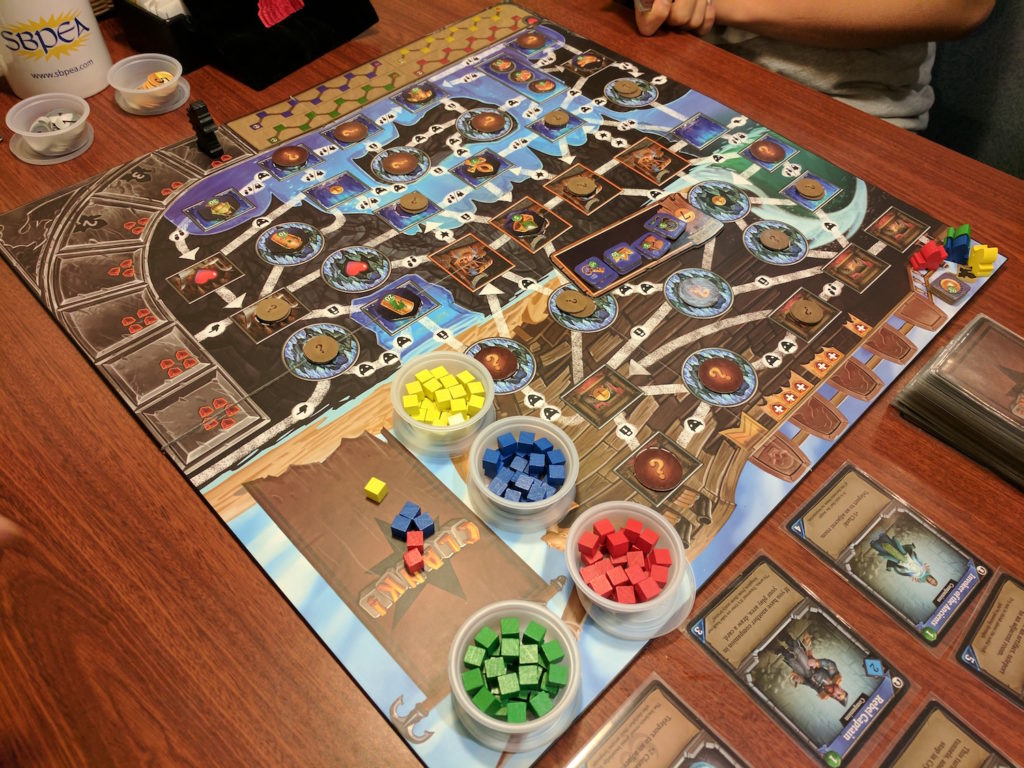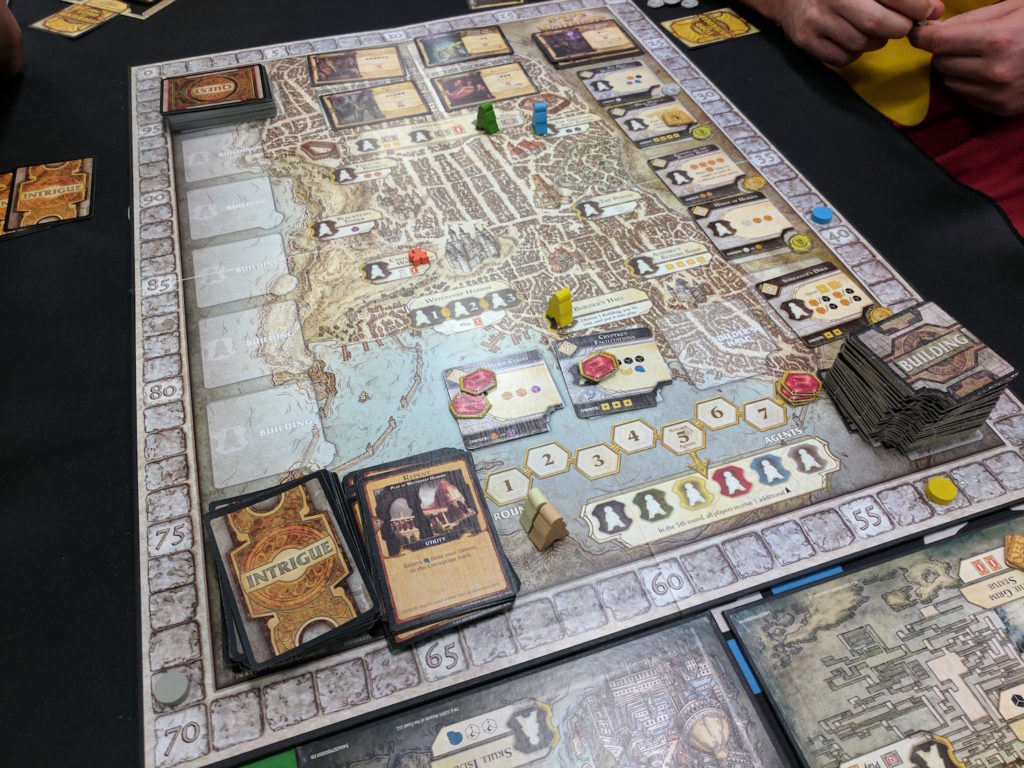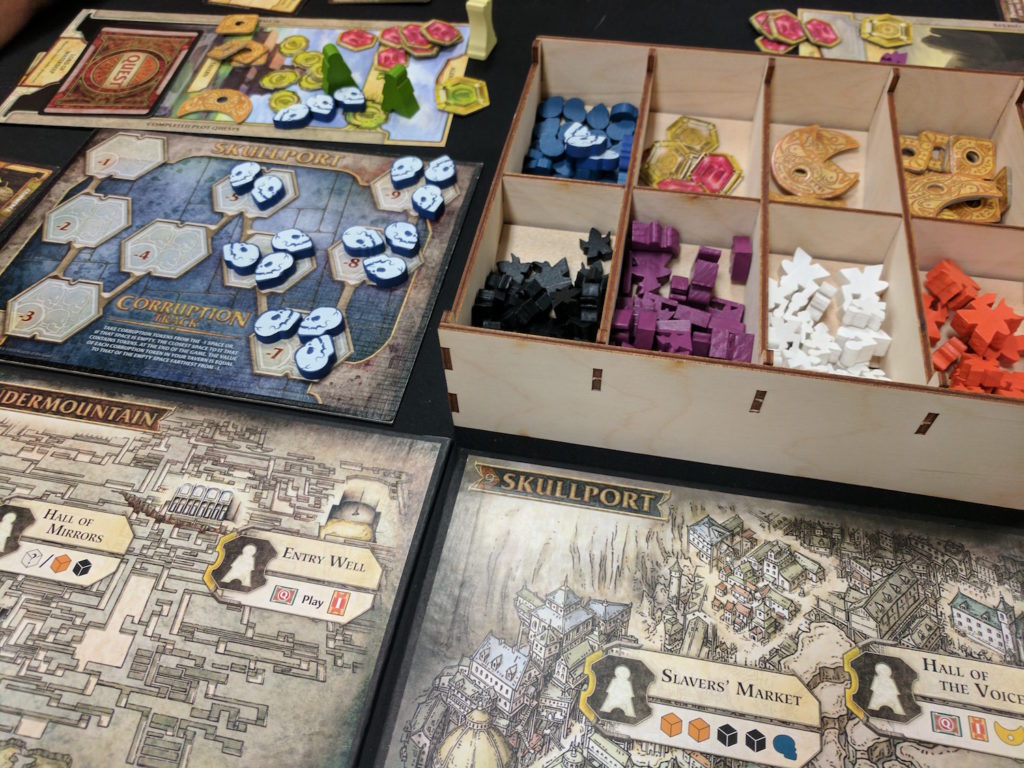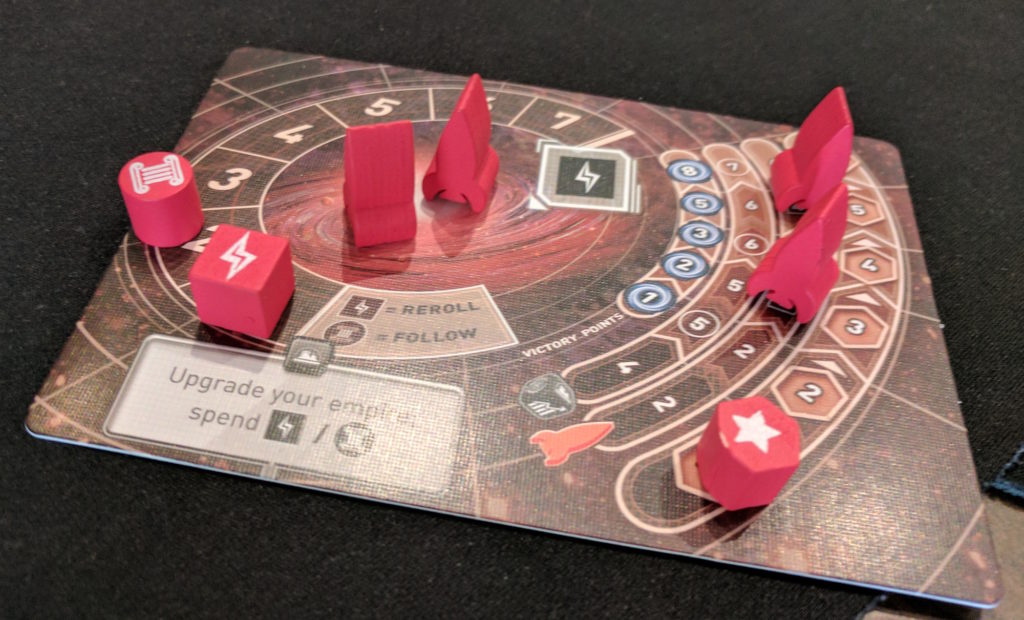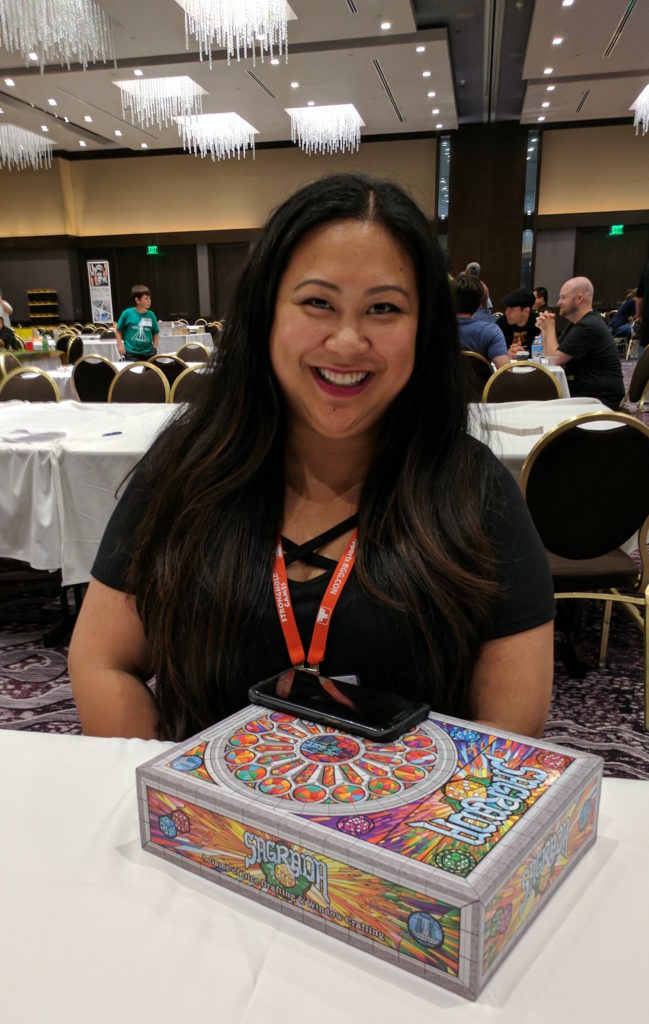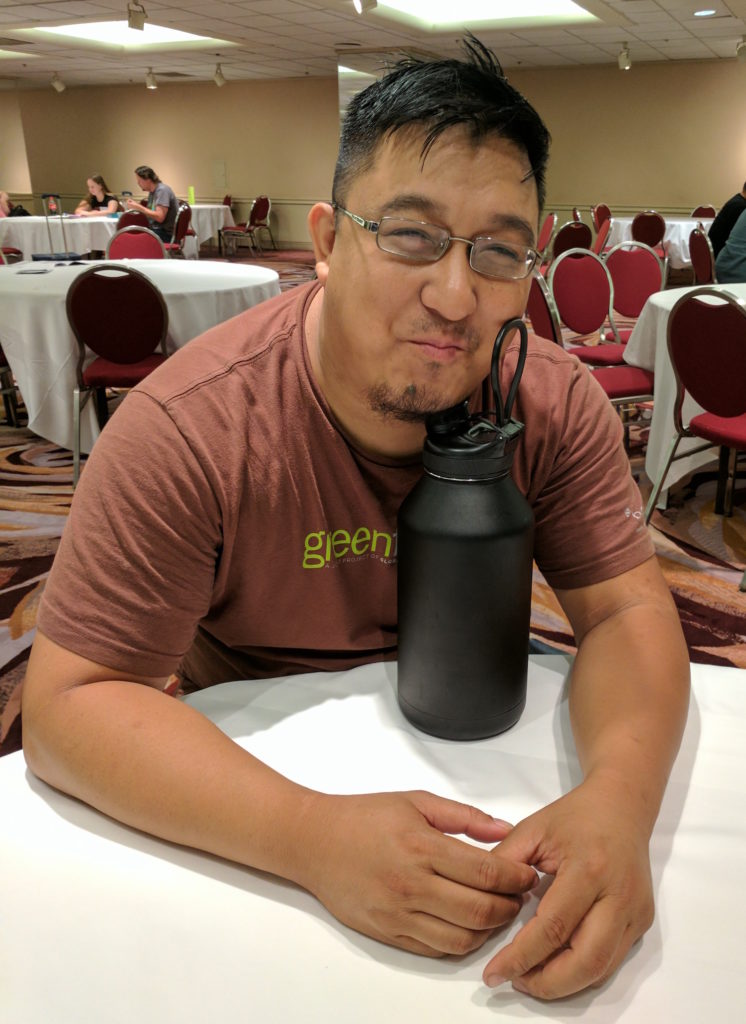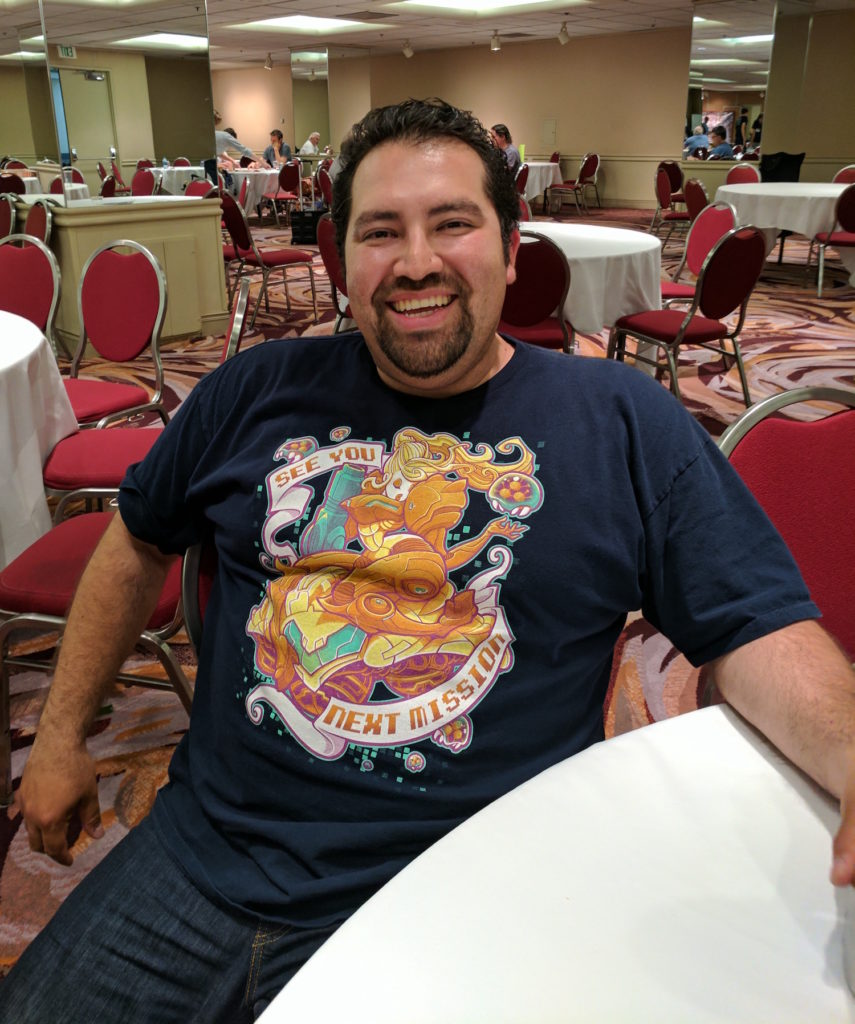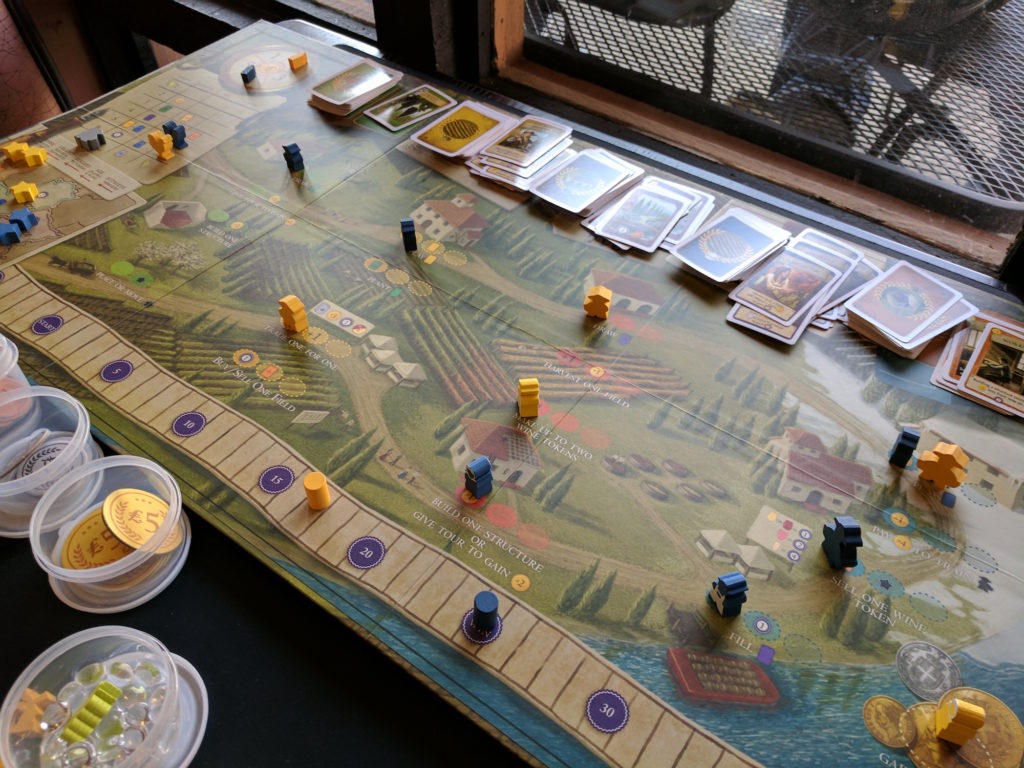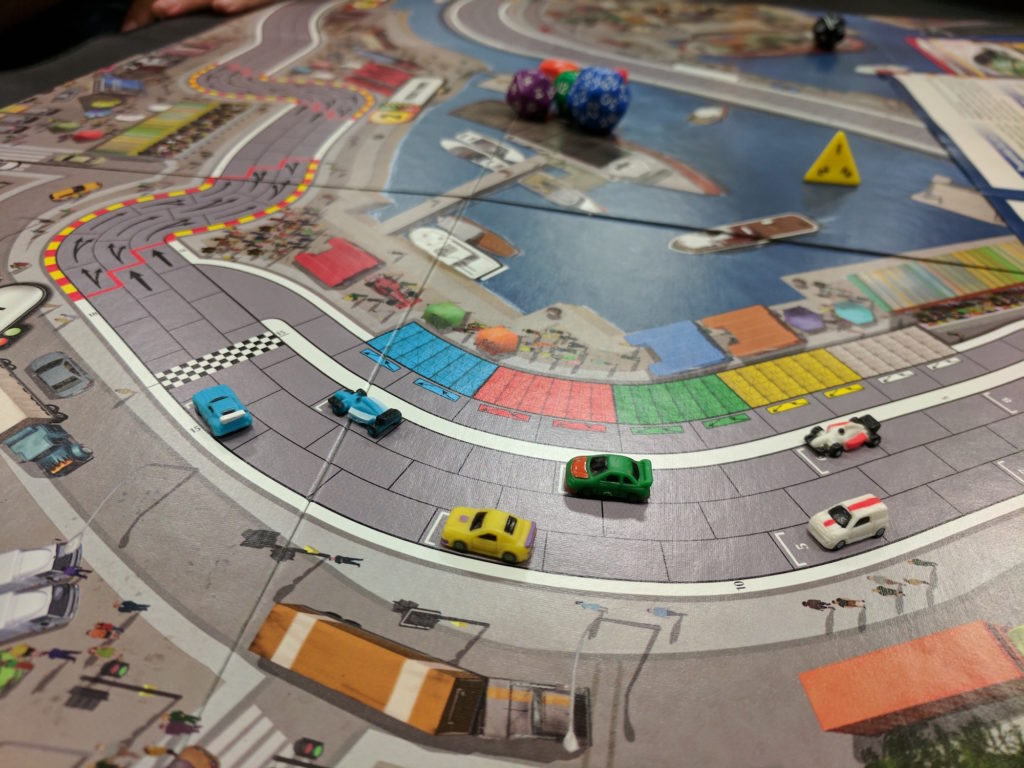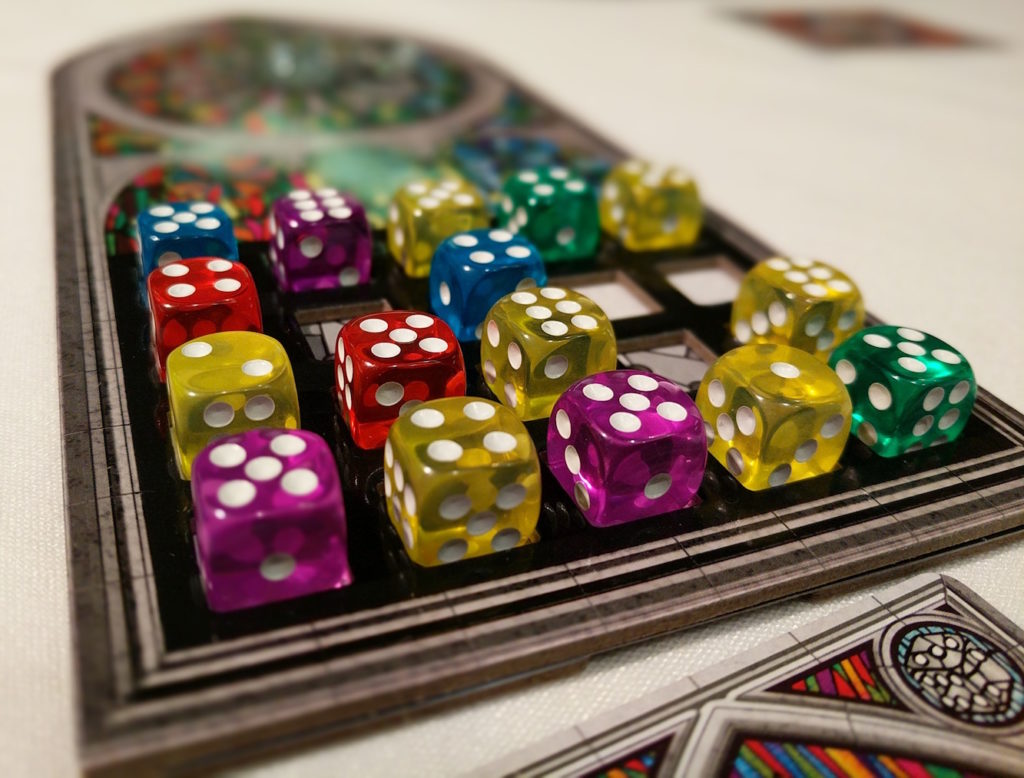
I’m playing a board game every day this month and blogging about it (I did a similar challenge last year). Feel free to join me during my Every Night Is Game Night: My Daily Play & Blog Challenge. And tweet me with what you’re playing these days!
I had a busy weekend that included a graduation party, Star Wars Reads Day, and quality time with our daughter before she begins her final three weeks of college (!), which meant that my time at Gamex was limited.
Thankfully, for the few hours I was there I was able to buy, sell, and play a few games. It was great seeing two of my regular gaming buddies, Oscar and PK, as well as my friend Meeple Lady. We’d originally planned on playing Agricola (still on my Shelf of Shame), but I was feeling the effects of a long day and asked to play Sagrada instead.
There’s been a lot of hype about Sagrada and after my first play I’d say it’s well-deserved. A simple yet thinky puzzle game of dice allocation, there’s a lot to like here, from the nice-looking components to the elegant play. It’s a game that will satisfy both gamers and non-gamers.
Players are trying to build their stained glass windows through the use of colored dice. Dice are randomly pulled out of a bag and rolled, then each player takes one for their window.
(Before I continue, a word to my fellow colorblind gamers: although I did okay with Sagrada, you should try it out before buying; colors are used throughout the game and there are no unique icons for each color to make things easier. I had trouble differentiating between blue and purple. From what I read, Floodgate Games did try to do something about this, but the budget couldn’t accommodate those with colorblindness. It’s a real shame that the game’s accessibility couldn’t be improved. Perhaps in a later printing? One can only hope.)
Back to the game: there are rules of adjacency for each die, so players can’t just put them wherever they want. Additionally, there are secret goals for each player; for example, mine was the total number of pips on the yellow dice on my window so I was trying to snag those yellow dice every chance I could. There are also public goals that I basically forgot about for the first half of the game. These included pairs of certain dice and same-colored dice diagonally.
Finally, there are special game-breaker community cards that a player can pay for to help them complete their window. After all of the dice are placed, the next round begins. A game consists of 10 rounds and at the end each player counts up their points and subtracts one point for every empty spot.
I really enjoyed this game, in spite of the colorblind issues. I love chucking dice and trying to figure out puzzles, so this was a natural fit. It reminded me of The Cubist, a similar dice-chucking puzzle game, which I liked, but Sagrada felt like it had a bit more meat on its bones.



